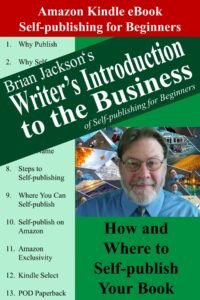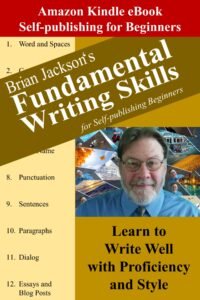Other than your book, your Amazon book description is the most important piece of writing you’ll produce to make a sale. Regardless of its importance, most writers fail to take the necessary time to produce a truly compelling book description. The process of creating compelling sales copy that turns potential customers into readers is known as copywriting. You need to take all the time necessary to produce a great book description. After all, your book description is an integral part of your Amazon sales funnel that looks something like this:
- Keywords in your book title, description and keywords get your book on page one of a book search.
- The reader is attracted to your book amongst all of those displayed by your quality book cover.
- Your book is reasonably priced, so they click to find out more.
- The potential customer reads your book description that compels them to dig further.
- The customer looks inside your book and readers the first few paragraphs.
- If the book is well written, you have successfully acquired a new reader.
The steps outlined above are what I refer to as your Amazon sales funnel. The process funnels people toward a buy while weeding out the casual browsers along the way. This process also maps closely to the old marketing formula identified through the acronym, AIDA.
Attention: Step one is to get the reader’s attention. You can’t sell to them if they don’t see your book in the first place. This is the job of the first two steps described above to display your book to readers who are likely to buy and to grab their attention with your book cover.
Interest: Step two is to spark the reader’s interest. I find that providing a reasonably priced book is more than enough to pique the reader’s interest.
Desire: Step three involves fanning the reader’s desire to read your book. This process falls to your book description, which is the first work of yours a potential customer is likely to read. Your book description needs to ignite an insatiable desire in your reader to hook them into buying.
Action: Amazon provides plenty of opportunities to act by purchasing or borrowing your book. Point these opportunities out to your readers so that they can easily find them. Ask your reader to buy your book.
So, just how do you fan the flames of desire in a potential reader through your book description? By applying a specific formula as described in the next section.
Structure of a Compelling Amazon Book Description
A compelling book description is, of course, well written, but it also follows the same AIDA structure to draw the reader in by grabbing their attention, generating interest, fanning the flames of desire and closing with a call to action. Let’s look at each of these steps from the perspective of a well-written book description.
Grab the Reader’s Attention
Open your book description with a shocker. How is this for an opening sentence to a horror novel or paranormal romance book description?
Jonathan was dead, though he didn’t know it yet.
The sentence is both shocking and makes the reader want to find out more. How could Jonathan be dead and still be able to think? How could one be dead and not know it? The sentence both intrigues and invites further investigation. That’s exactly what you want from the opening to your book description to intrigue and invite further investigation. Let’s continue with this opening.
Jonathan was dead, though he didn’t know it yet.
He’d been dead so long that he was beginning to stink. In fact, he’d been dead so long that parts of his body were beginning to fall off.
How could it be then that Jonathan didn’t recognize that he was dead? Well, here’s the full story behind Jonathan’s strange predicament…
This opening grabs the reader’s interest and leaves them wanting more. This is exactly what you want to accomplish.
A common way to begin a non-fiction book description is to ask a question that teases at the problem the book will solve for the reader.
Have you been trying to stop smoking for years without success?
This sentence gets right to the heart of the matter while indicating to the reader that the writer understands their problem. Let’s go further with this opening.
Have you been trying to stop smoking for years without success?
Perhaps you’ve attended meetings and tried the patch, but nothing seems to stop the cravings.
Well, first, don’t kick yourself. The habit of smoking and the drug nicotine are said to be more addictive and therefore harder to kick than heroin addiction.
Second, you’re in luck because you have this book in your hands.
Notice how with a few simple sentences, the writer manages to identify with the reader’s problem and even establish a rapport with the reader. This opening ends with a hint that the book their reading provides the solution to their problem, which leads us to the next goal of a compelling book description.
Pique the Reader’s Interest
Now that you have your reader’s attention, it’s time to develop their interest in your book. I usually do this by making claims regarding the book’s contents. Remember, you’re trying to show that your book will provide a solution to the reader’s problem. Whether it’s to stop smoking or to simply find a solid adventure story, it’s time to make some bold statements.
- This book is like no other you’ll ever read.
- This book will scare the socks off you.
- Never has a stronger love story been told.
- You’ll laugh until tears come to your eyes.
Spend some time telling your readers what to expect.
Build the Reader’s Desire
Now’s the time to build the reader’s desire for your book to a fever pitch. Add supporting details to your opening statements regarding the benefits of reading your book. Such details can include but are not restricted to the following.
- Exciting hints into the plot, people and places of your book.
- A list of topics covered – note that including bulleted lists can make your description more approachable but breaking up any solid walls of text.
- Testimonials by readers and other authors.
- Special offers included with the book (e.g. website and Facebook group).
Your goal is to make your book irresistible to the reader.
Close with a Request to Read Your Book
Whether you want the reader to purchase or borrow your book, you’ll get neither if you don’t ask. End every book description with a call to action. Point out where the buy button is located so the reader can easily find it.
Another useful technique for motivating a potential customer to buy is the scarcity technique. This technique involves suggesting that the product is about to go up in price or be removed from the market. This suggestion is usually accompanied by the prompt to buy now before it’s too late. I’ve never applied this technique to a book description, but I thought I’d include it here for completeness.
Using HTML Markup to Spice Up Your Book Description
Amazon supports a limited set of HTML markup in the product description that you can use to add some bling to your words. Tags are used by entering a start tag, followed by the text to be affected and concluding with an end tag. End tags use the same tag name as the corresponding start tag but precede the tag with a slash.
The following two examples would bold face and italicize the word “Text” respectively.
<strong>Text</strong>
<em>Text</em>
Creating an unordered or bulleted list or an ordered, or numbered list is a little more involved. To accomplish this, you begin your list with either a <ul> or <ol> tag then enclose each element in the list between <li> and </li> tags. For example.
<ul> or <ol>
<li>Text 1</li>
<li>Text 2</li>
</ul> or </ol>
Again, check out the Amazon product page for this book to see the results of using all these tags.
Compelling Book Description Example
Take a look at the description of this book on its Amazon product page. Simply open an Amazon browser tab and search for the following in the Kindle Store.
Amazon Kindle eBook Marketing and Promotion for Self-publishing Beginners
Make note of the AIDA structure of the description and the use of HTML markup to emphasize key components of the description.


















